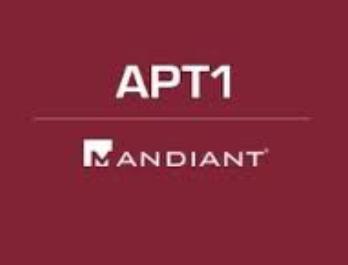One Year Later: The APT1 Report
In February 2013, Mandiant released a 74-page report, APT1, that told the story of a professional cyber-espionage group based in China and probably funded by the Chinese government. At this year’s RSA Security Conference in February, I participated in a panel discussion entitled, “One Year Later: Lessons and Unintended Consequences of the APT1 Report.”
The APT1 report included more than 3,000 APT1 indicators — domain names, IP addresses, X.509 encryption certificates, and MD5 hashes of malware. It made headlines around the world in such mainstream publications as The Wall St Journal and The New York Times. And it was controversial. Detractors within the information security community accused Mandiant of exploiting fear, uncertainty, and doubt; of blowing operational security by revealing specific signatures of tools and methods used by the attackers; and of capitalizing on the woes of its clients for publicity gain.
A couple of months after the report came out, I wrote that it made our industry stronger by encouraging — if not forcing — information sharing; that the cost to researchers and investigators with active cases was low, because the data was already known by the people within our community who needed it; and that it added details that allowed an exponentially larger group of defenders to leverage the intelligence for defensive purposes. And I also said that the report was a piece of brilliant marketing.
Now that a year has passed, Gal Shpantzer, John Prisco, Martin McKeay, Lance James, and I discussed what we thought. Here are my views.
First, it’s interesting to see so many in an industry that complains bitterly about FUD complain bitterly about fact. The people who gripe about APT1 still do so on the grounds that it blew operational security by discussing how our enemies work. I continue to reject this argument wholesale on the grounds that the good done for the community as a whole, and the information security industry in particular, far outweighed the few investigations that may have suffered. (I still doubt many did.) I have long felt that effectiveness in information security is the ability to detect, scope, and contain issues. Specific, usable threat intelligence like APT1 is crucial to enhancing that ability. That far outweighs any concerns about whether an individual investigation may have been compromised.
One of the undeniable trends that was helped by the release and publicity surrounding the APT1 report is the rise in the threat intelligence industry — as a concentration, as a practice, and as a product area. The expo floor at RSA 2014 showed that “Threat Intelligence” is the SIEM, the NAC of 2014. That is an important accomplishment; it’s providing economic opportunity to entrepreneurs while making some in the industry more effective. That’s because the job of information security — the job of well-leveraged threat intelligence — is:
- To prevent losses as best you can
- To learn about and understand the scope of any security incident as early as possible
- To move to contain it as quickly and efficiently as possible
Then it’s to start the cycle again.
The idea that you’re going to do this on your own is as dated as challenging the guy who attacked your network to a duel — with sabers. Give executives the context and facts about the business impact of security issues, and most of the time they will make the decision that is most efficient. I trust the money. The money has ways of deciding what is best for making more money — most of the time. That is not, of course, universal.
My favorite CEO quote of all time was something like “Oh, well, the criminals already have all our IP, so why should I spend the money to fix everything now?” Those kinds of executives exist, and it’s galling to admit it, but shareholders actually reward them in the short run. By giving these kinds of people more information about why this is not a sustainable strategy, we increase the opportunities for them to make better decisions.
Nick Selby is co-founder and Chief Executive Officer of StreetCred Software Inc., a Texas-based company that provides law enforcement agencies with software that helps them locate and capture fugitives. Nick speaks and writes regularly on issues of information security, … View Full Bio
Article source: http://www.darkreading.com/vulnerabilities---threats/advanced-threats/one-year-later-the-apt1-report/d/d-id/1127681?_mc=RSS_DR_EDT
